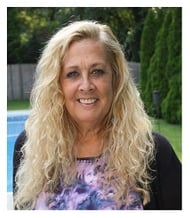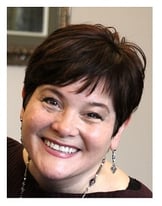Posted by Caveo Learning ● December 28, 2015
Learning Leaders Share Advice for Success in L&D
As part of our Interviews with Learning Leaders series, we asked some of the learning & development industry's cutting-edge thought leaders what advice they would give to their L&D counterparts. Here are their answers.
 Diana Ferguson, L&D supervisor, Wawa Inc.
Diana Ferguson, L&D supervisor, Wawa Inc.
Don’t expect to always see the full results of the work that you do, as it is a small part of a bigger developmental picture. Know that the work you do is appreciated by many, even though it is not always evident. Try to see things from the perspective of the learner, and the challenges that may exist in the transfer of learning. Seek new ways to engage the audience and make learning fun. As a team leader, be honest and supportive, provide short- and long-term goals, create an environment of sharing and caring, be there when your team needs you, and be engaged in listening.
Sandy Stricker, director of learning strategy and technology solutions, CDK Global
 Do not hesitate to take a lateral or seemingly lower-level position. I went from a senior director to director position in order to pick up two major areas of experience. Some people saw this as a demotion, but I didn’t. The way I see it, it was an opportunity to learn and grow. I got experience managing the curriculum design group for sales. I picked up two things on my bucket list: I gained the inner workings of sales, and I now understand the complexity of good instructional design, particularly for eLearning. It is important to understand what you have not done in your career and what you would benefit from.
Do not hesitate to take a lateral or seemingly lower-level position. I went from a senior director to director position in order to pick up two major areas of experience. Some people saw this as a demotion, but I didn’t. The way I see it, it was an opportunity to learn and grow. I got experience managing the curriculum design group for sales. I picked up two things on my bucket list: I gained the inner workings of sales, and I now understand the complexity of good instructional design, particularly for eLearning. It is important to understand what you have not done in your career and what you would benefit from.
Also, taking a role that is outside of your comfort zone may be helpful in getting to the next step. When I stepped into the learning technology role, I didn’t know my SCORM from my AICC. And now I’ve gained not only a working knowledge, but I’ve built relationships with our IT organization that have been amazing.
 Jason Gardner, sr. organizational development trainer, Southwest Gas Corp.
Jason Gardner, sr. organizational development trainer, Southwest Gas Corp.
My biggest learning successes have come from a combination of education and real-life experience. It’s great to know all about Maslow and Herrmann. It’s not as easy to connect the dots to help leaders and employees understand what they get out of it if you don’t know what their life is like. Spend time understanding the operational mechanics of your business so you can provide them with useful solutions that improve performance. Avoid rolling out a program that you perceive as useful that ends up useless because you were unable to answer what’s in it for them.
We also have to remember to give a program time before we scrap it and try another one. Some trainers have a tendency to go to a national conference and come back ready to throw out the current program and implement a new one. It’s disruptive to the talent program, and it weakens our credibility.
Casey Rasata, senior manager for performance and learning consulting, Eaton Corp.
 Less is more! We have transitioned from making users wade through a sea of content to curating a small pile of information. We have also been able to push the systems to the background by implementing functional colleges and regional hubs. When it comes to training or anything you do, think about what is feasible and what it’s going to take to do a great job, and try to focus on those critical elements. Whether budgets are being cut or you are trying to improve your reputation, think about how you can do an excellent job on core projects first before branching into other areas.
Less is more! We have transitioned from making users wade through a sea of content to curating a small pile of information. We have also been able to push the systems to the background by implementing functional colleges and regional hubs. When it comes to training or anything you do, think about what is feasible and what it’s going to take to do a great job, and try to focus on those critical elements. Whether budgets are being cut or you are trying to improve your reputation, think about how you can do an excellent job on core projects first before branching into other areas.
My big advice is: Less is more; do a smaller number, and do them well.
 DeAnna Myers, learning & development manager, Sargent & Lundy
DeAnna Myers, learning & development manager, Sargent & Lundy
Be patient with the evolution as you move things ahead. Meet internal clients where they truly are, versus where you want them to be. Take time to build your credibility through trust, and get comfortable with small steps—they may mean more than you anticipate. Finally, when implementing blue-sky change, consider your organization’s culture and how receptive they are to change. You may find that several small changes scheduled in sequence are easier to implement than one large, sweeping change; it may be best to make it evolutionary.
Jasiel Legon, vice president of human resources, Oportun
 If you are not invited, ask to be invited. Talk to the organizer and let them know you are interested in the business and would love to attend—maybe not all, but some. Let them know that you want to better understand the business and what impacts the bottom line so you can make better decisions, have better learning interventions, and see how the business is changing. In order to be relevant, you must have a pulse on business. Define the reason—the ROI—for you to be there. This shows you are being a proactive partner, versus passive.
If you are not invited, ask to be invited. Talk to the organizer and let them know you are interested in the business and would love to attend—maybe not all, but some. Let them know that you want to better understand the business and what impacts the bottom line so you can make better decisions, have better learning interventions, and see how the business is changing. In order to be relevant, you must have a pulse on business. Define the reason—the ROI—for you to be there. This shows you are being a proactive partner, versus passive.
 Ellen Barhorst, director of L&D, Luxottica Retail North America
Ellen Barhorst, director of L&D, Luxottica Retail North America
My core belief is that learning is everywhere. It is happening in real time, is collaborative, continuous, and connected. Lifelong learning is a fact, not an aspiration. Curiosity and learning are the fuse of innovation. Grow and explore to better yourself and others. Always pursue your learning and development with passion. Just do it—whatever it is that you want to learn. It will make a difference in your life.
Jann Iaco, eLearning and training specialist, Crate&Barrel
 Make it look the best you can while watching your budget. Be cautious about spending on beautiful images and purchasing characters. First think about your own resources within the organization. It looks best when eLearning reflects what the environment looks like for the learning audience. For example, if the learner is in a distribution center, often photos to purchase on expensive websites don’t look like the people in your audience. Photos should reflect what people look like, doing real tasks. Some creativity will help create a database and montage of your own characters. In some courses, using photos of your own work surroundings and people will create a realistic environment. And stay ahead of legal by making sure to get releases signed as you go!
Make it look the best you can while watching your budget. Be cautious about spending on beautiful images and purchasing characters. First think about your own resources within the organization. It looks best when eLearning reflects what the environment looks like for the learning audience. For example, if the learner is in a distribution center, often photos to purchase on expensive websites don’t look like the people in your audience. Photos should reflect what people look like, doing real tasks. Some creativity will help create a database and montage of your own characters. In some courses, using photos of your own work surroundings and people will create a realistic environment. And stay ahead of legal by making sure to get releases signed as you go!
 Leonard Cochran, manager of learning programs, Hilton Worldwide
Leonard Cochran, manager of learning programs, Hilton Worldwide
You have to be a lifelong learner and you have to be passionate about helping people improve their skills. That’s the foundation, as far as I’m concerned. As a learning professional, we try to provide the knowledge, but you also have to inspire passion or action from the learners, because knowledge without action is of little value. From there, you certainly have to stay flexible and keep your ego on the shelf. There’s no place for egos when you’re trying to help someone else accomplish something. It’s a collaborative effort to get anything done.
Terrence Donahue, corporate director of learning, Emerson Electric
 I’m convinced our real value will come not in the things we say, but in the questions we ask. Learn the art of asking great questions. Learning this skill has completely changed my career.
I’m convinced our real value will come not in the things we say, but in the questions we ask. Learn the art of asking great questions. Learning this skill has completely changed my career.
To be successful, find out what is going on in your business and get in on it!
Topics: Leadership Development, Interviews with Learning Leaders

 Diana Ferguson, L&D supervisor, Wawa Inc.
Diana Ferguson, L&D supervisor, Wawa Inc.

 Ellen Barhorst, director of L&D, Luxottica Retail North America
Ellen Barhorst, director of L&D, Luxottica Retail North America